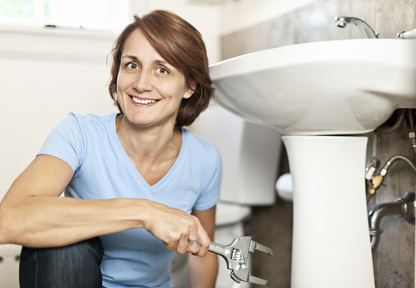Have you been trying to find advice on How to Repair and Prevent Bathroom Water Damage?

The bathroom is extremely at risk for moist accumulation and potential water damage due to the regular use of water in it. This short article provides basic inspection techniques to help detecting water damage hazards.
The frequent use of water in the bathroom makes it extremely vulnerable for wet buildup and also possible water damages. By checking it on a regular basis, you can minimize water associated problems.
The complying with set of evaluations is easy to perform and also need to be done as soon as in every 3 months in order to keep your restroom in good shape and to stop possible water problems triggered by the bathtub, the shower, pipe joints and also plumbing, sinks, closets, as well as the bathroom
Do not neglect performing these examinations and also be extensive while doing them. Keep in mind that these straightforward examinations can conserve you a lot of cash by giving early indications for water damages
Sinks as well as Cabinets
Sinks as well as cabinets are revealed to wetness and humidity daily and also are commonly neglected. Inspect consistently under the sink as well as on the countertop over it. Repair any drip in the catch as it may recommend drainpipe problems. Check out the sink, sluggish draining pipes might indicate an obstructed drain. Replace sink seals if they are split or loose.
Bath tub as well as Shower
The shower and also tub require special focus as well as upkeep. Inspect the tiles and also replace if fractured. Ensure that there is no missing out on grout in between the ceramic tiles. Evaluate as well as change split caulking at joints where the walls satisfy the flooring or the tub. Obstructed drains and also pipes troubles will stop the bathtub from drying out and might indicate severe troubles below the tub. Seek advice from an expert promptly to stop structural damages. Pay attention to discolorations or soft locations around the bathtub wall surfaces as they might indicate an inner leak.
Plumbing
Signs for water damage are tough to detect considering that the majority of pipes are set up inside the wall surfaces.
Pay special interest to floor covering and walls wetness and also stains as they might show an unnoticeable plumbing trouble. Check wetness degrees in adjoining areas as well.
The Bathroom
The commode is a vulnerable water junction. Examine the water lines and look for leakages around the toilet seat, in the pipe, and also under the water tank. If you find any indications of dampness on the flooring around the toilet, check for leaks in the toilet edge and also tank seals.
Be aware that hanging bathroom bowl antiperspirants raises the chances for clogs.
Water Damage Signs In The Bathroom To Avoid Cleanup
Musty smell
This is one of the easiest signs to catch because musty smells are so odorous. The damp, earthy, moldy smell should be a big red flag. The smell will develop when moisture gets trapped in surfaces, and begins to facilitate mold growth. Leaking pipes under cabinets, inside walls, and behind shower fixtures will cause moisture to stay trapped and not dry, which will lead to mold growth and spread. As soon as you notice any musty smells in your bathroom, have it checked for hidden water damage and cleanup signs.
Visible mold
If the smell isn’t there to give it away, sometimes you will actually see mold growth. Finding mold in your bathroom is a serious problem, because mold is very harmful to your health. By the time mold growth is visible, it also means that water damage has already occurred and been present for some time. The only way the mold problem can be resolved is to find the source of the moisture and get it stopped. To safely and adequately remove mold, you need to have professionals handle the remediation. Do not waste any time in getting mold problems addressed, fixed, and sanitized so that you can protect you and your family from the many respiratory symptoms caused by mold exposure.
Damaged floors
Bathroom floors should be able to withstand some exposure to water while still remaining in good condition. However, when excess exposure or water leaks occur, they will begin to damage even the most water-resistant flooring. If you notice any cracking, bubbling, staining, or warping on your bathroom floors, there is probably a water leak somewhere causing the distortion. If you notice areas of the floor have become softer, or even have a spongy feeling, there is probably damage to the subfloor. Subflooring is typically made up of plywood. When plywood is exposed to water or moisture, it will absorb it. Once it has become saturated, the weight of the excess water will cause the wood to swell and soften. Check the floors in your bathroom frequently to catch any of these sings before they lead to damaged subflooring.
Changes on walls
When water leaks behind walls, it will cause changes in the drywall. Peeling plaster, blistering paint, and soggy wallpaper are all good indicators that excess water is building up behind the wall. Water leaking behind drywall will cause it to swell and be soft to the tough. If you start to notice gaps along the trim of your walls, or where tile meets the wall, it could also be a strong indicator that there is a leak behind the wall. Any changes, distortion, or damage on the walls should be evaluated as soon as you notice it to prevent further water damage and cleanup.

I'm very occupied with Preventing Water Damage in the Bathroom and I hope you liked our blog entry. Are you aware of another person who is sincerely interested in the topic? Do not hesitate to promote it. Many thanks for taking the time to read it.
Schedule Estimate